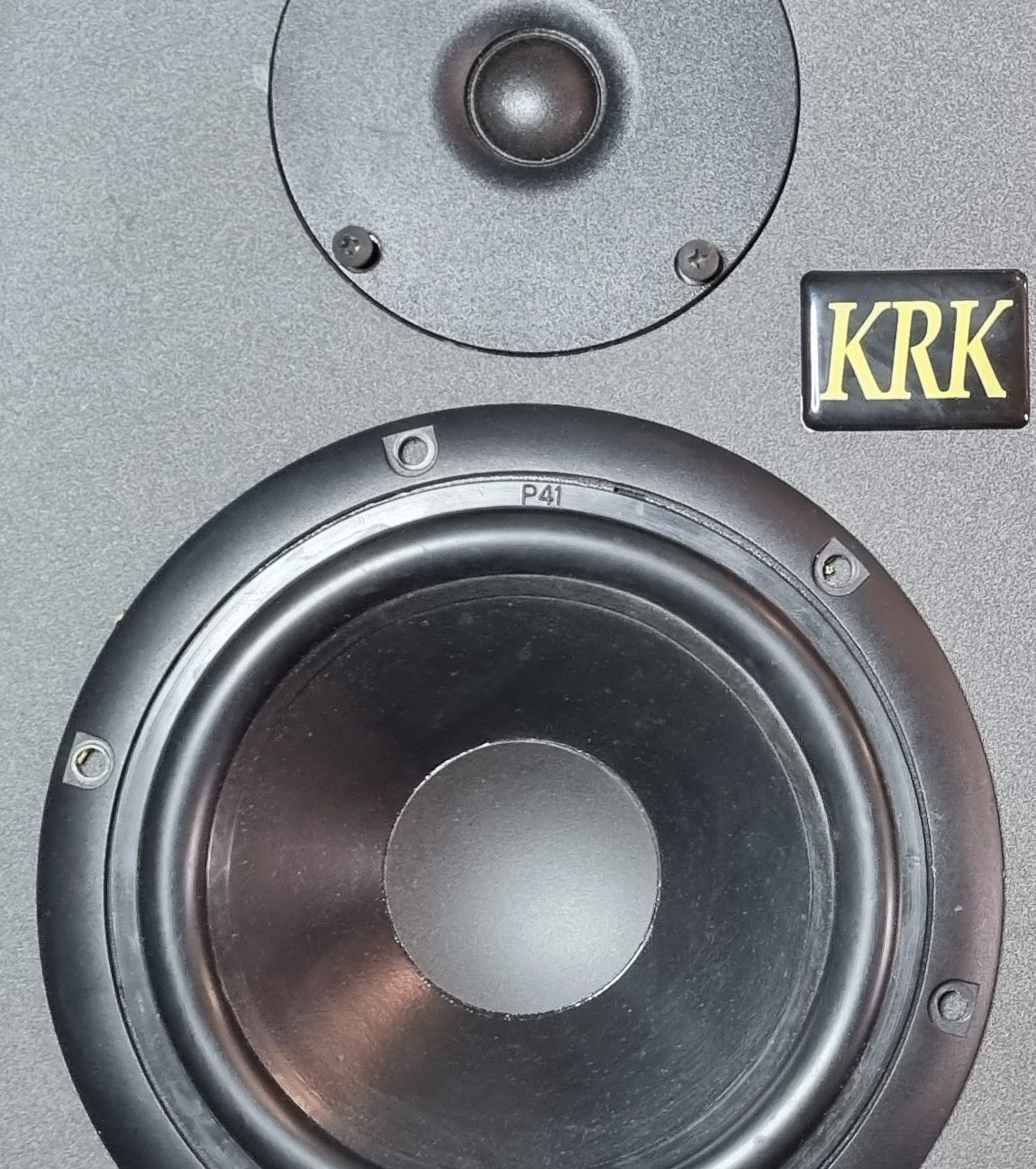Customer mentions having previously lent out their KRK Rokit passive speakers, they came back ‘sounding awful’, and went for a service elsewhere, apparently there was ‘some rewiring done’, mentioned the crossover, and something had burnt out? All a bit vague.
Opened up inside and couldn’t see anything immediately obvious with the crossover (didn’t look like it was messed with), and both woofer and tweeter appeared to be functioning, although noted that dropping EQ between 250-500hz and boosting 5K-10K helped with the output, so with the information presented, took a more in depth look at the crossover, as perhaps it was replaced and not the right one?
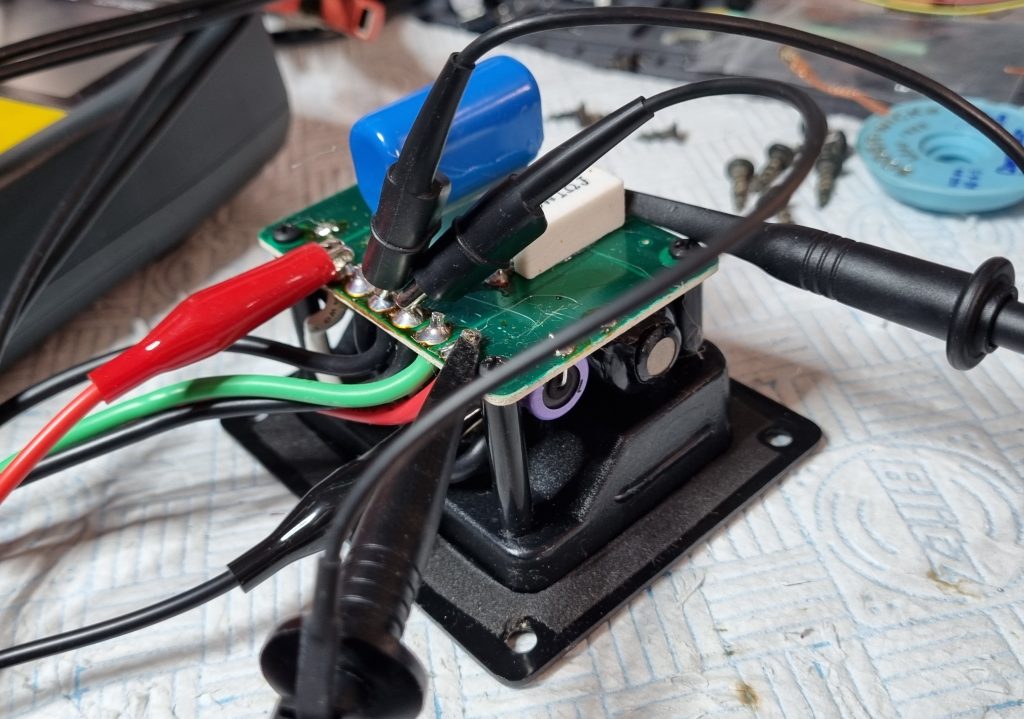
I wasn’t sure if this was as originally designed, or someone had rewired/adjusted values or anything, so took some measurements and with help of sig gen and scope produced a rough bode plot of the crossover:
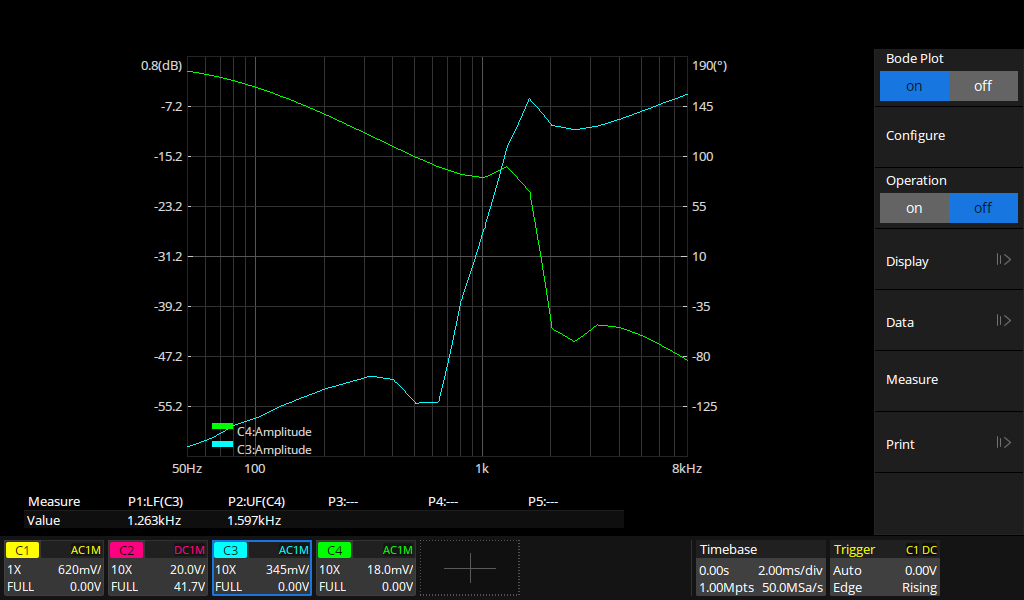
A schematic and rough measurement of components was identified
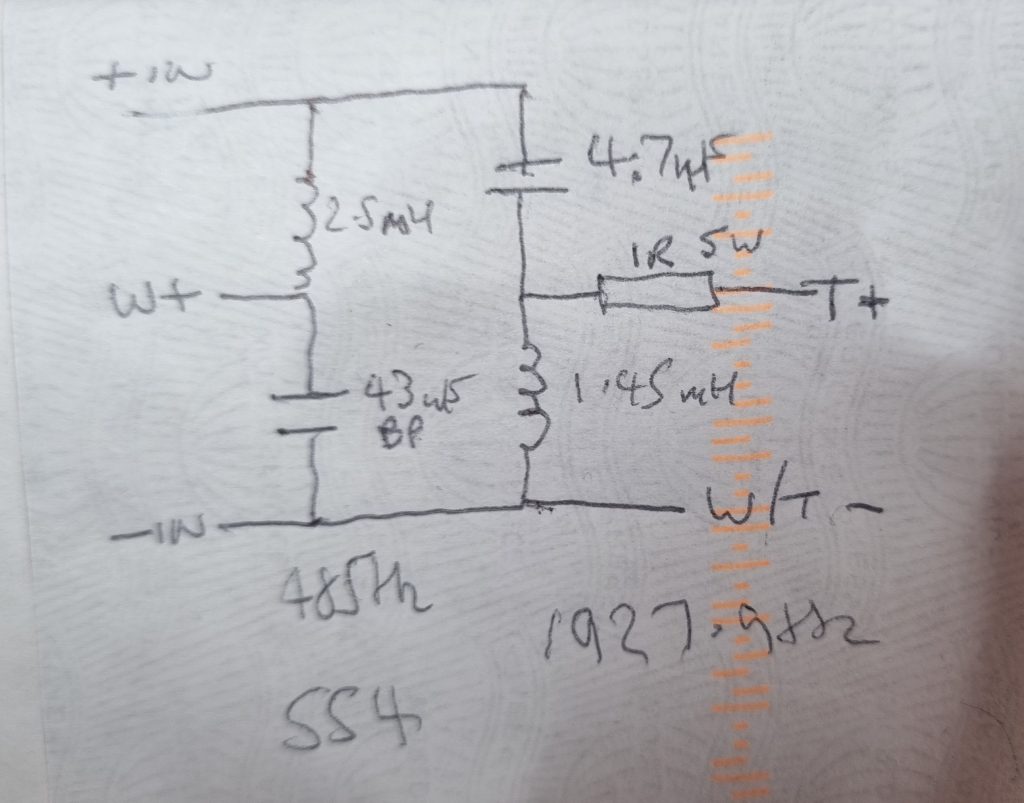
The bipolar electrolytic is marked 33uF so was a little out of spec, but calculations suggested that would bring down the woofer HF cutoff if anything so didn’t think that was the issue.
I got in touch with Gibson (who had the KRK brand) who passed me onto a local repair centre who didn’t know and passed back to someone else at Gibson who amazingly managed to find a hand-drawn crossover schematic from 1997, which matched my diagram other than being 1.5mH inductor to woofer and 1mH to tweeter. My measurements (with any possible error) were close enough to not be significant.
By process of elimination I went to look at the tweeter assemblies. Even though they were tweeting, the output level wasn’t easily measurable. I disassembled one and found the ‘rewiring’ that had taken place:
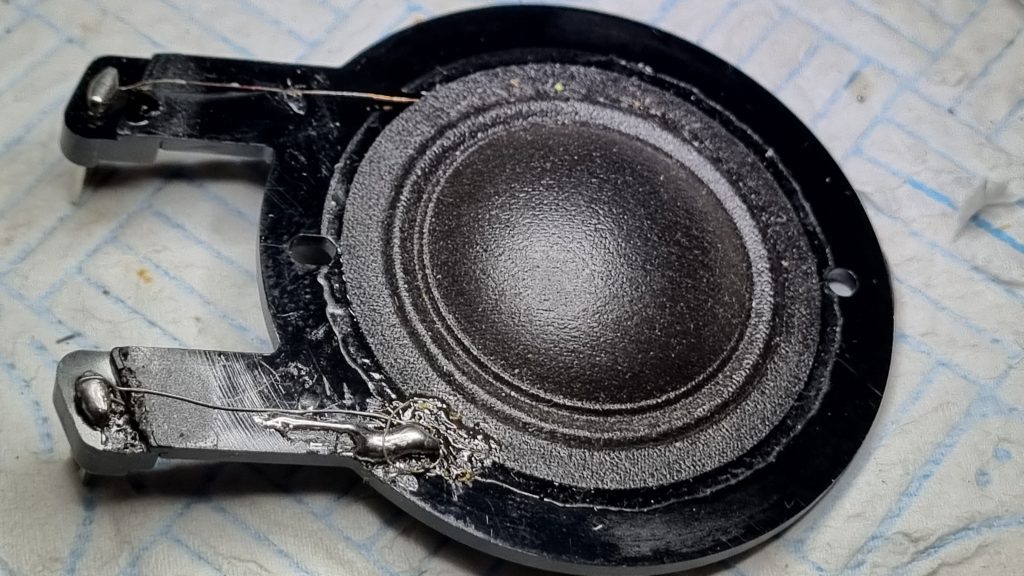
I then looked at the reverse side to find the voice coil loose not attached to the cone, no wonder they weren’t right, the coil was moving but hardly any transmission of that energy to the cone!
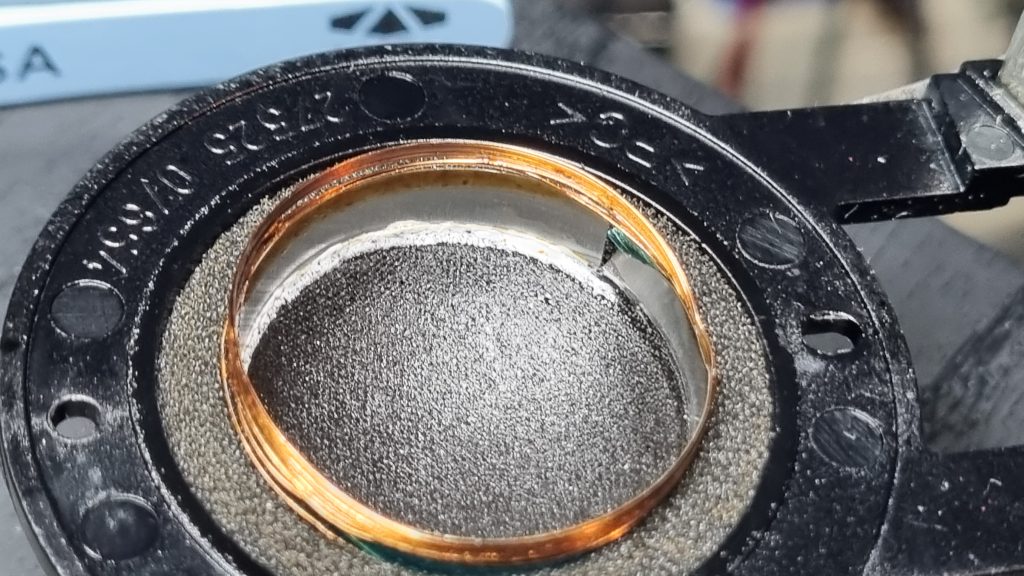
Clearly the previous repair only addressed the electrical issue, not the mechanical (given everything and a burnt out wire, probably overheated and adhesion lost so warranted replacement anyway), an insufficient repair in my eyes.
A pair of new voice coil assemblies later:
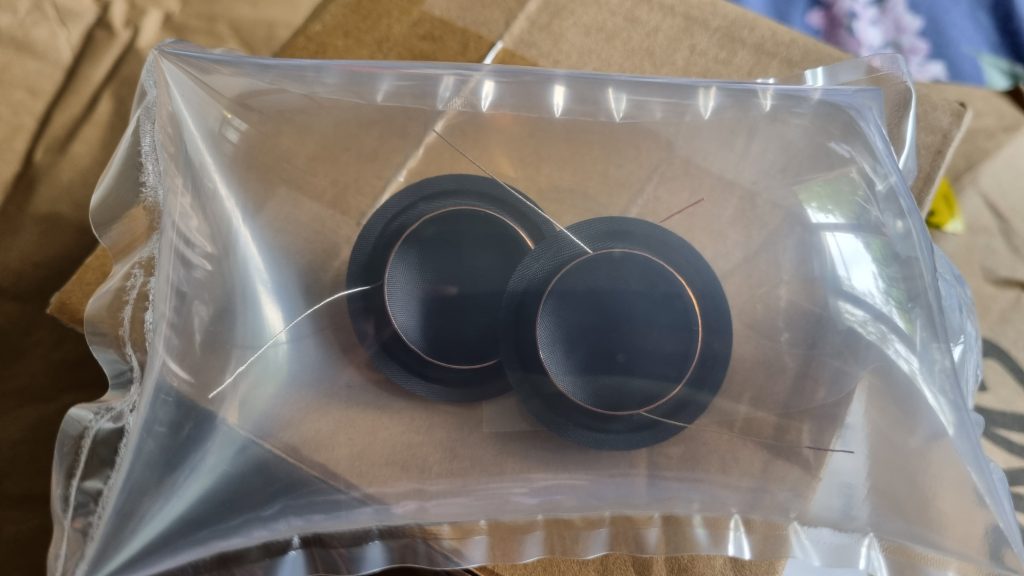
And some tweeter microsurgery:
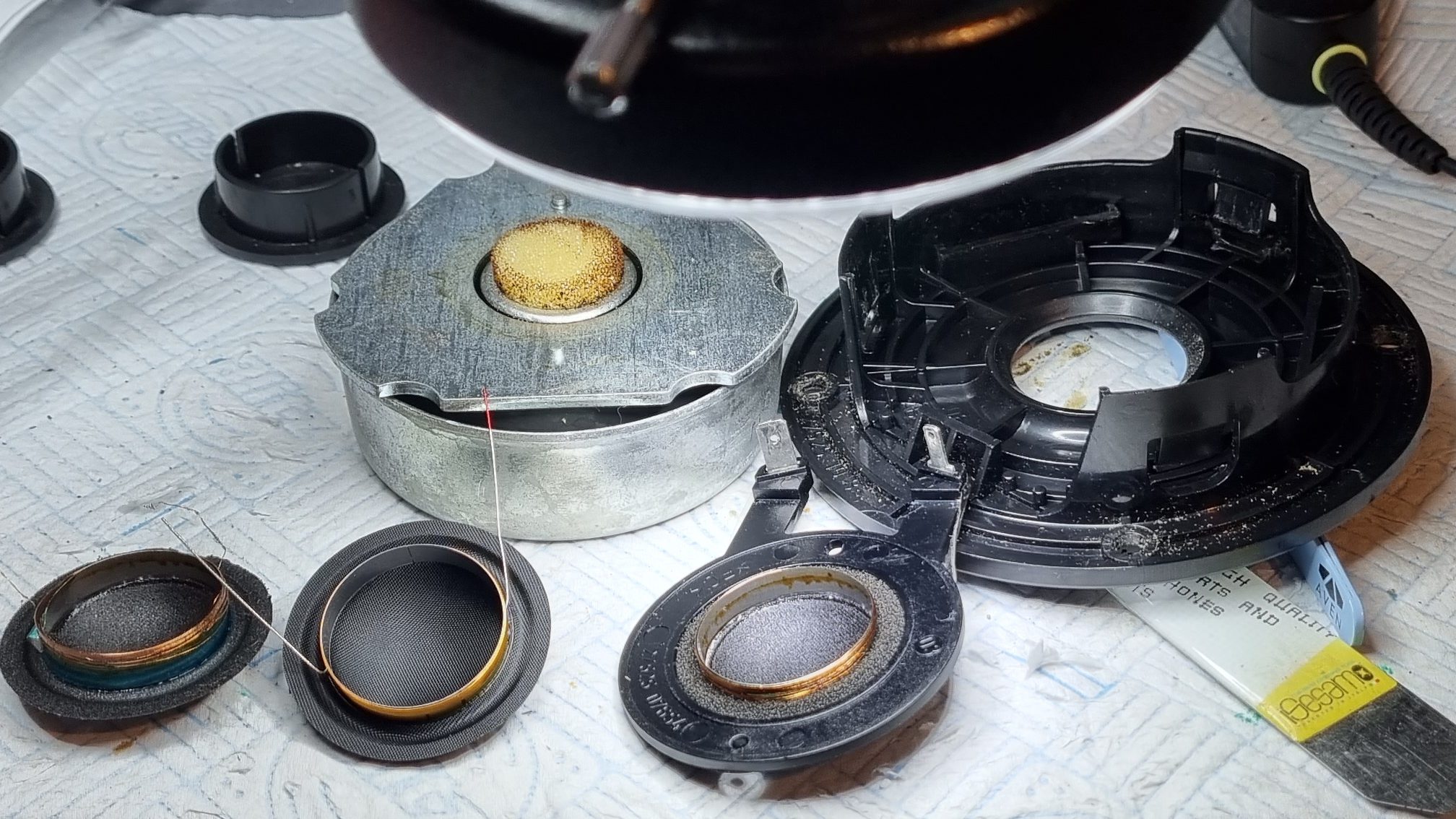
After ensuring central positioning of the new coils in their housing, and fitting back into cabinet, a marked difference in output was instantly obvious. Yep, indeed, I can now see how they did ‘sound awful’ before, but they definitely sound sweet now 🙂
